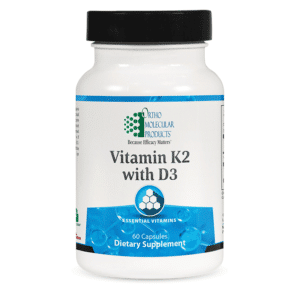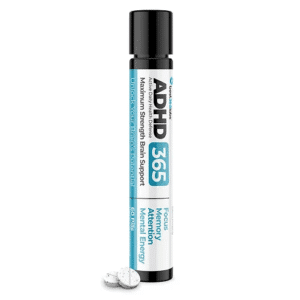Ketamine, What Is All the Fuss About?
By Koby Taylor, PharmD
If you’ve been paying attention lately, you probably have seen and heard a lot of advertising and news articles about ketamine. As a pharmacist, when I see and hear that drugs like this have resurfaced into the mainstream, I’m always curious about how this must appear to the everyday person. People who are not in the healthcare world may think, “Is this a fad, is this a miracle, or is it just another pharmaceutical drug getting pushed out on the population? And, why should I even care?” From my pharmacological and functional medicine perspective, ketamine’s popularity in the media lately has come on like a fad, but as far as ketamine’s history and its uses, it is a miracle. Frankly, I’m amazed it took so long to reach mainstream media. For years, my pharmacists and I have been combining ketamine and other ingredients to relieve pain from arthritis, neuropathy, migraines, post-surgical pain, scarring, and so on. In my pharmacy, I have found that most patients prefer using a ketamine compound alternative to opioids when it comes to pain management simply because ketamine is devoid of side effects like nausea and constipation, which opioids are famous for.
Why and How Does It Work So Well?
Let’s touch base on the basics about pain and the brain and then the basics about ketamine. When pain receptors are activated, like when you stub your toe, signals are sent through your nervous system to your brain, specifically the prefrontal region and limbic system (ACC, amygdala, VTA, and NAc). This system analyzes the signals and prepares your body for a fight or flight response by releasing cortisol. This is why you suddenly feel sweaty, your heart races, and you get emotional. All of these are reactions to painful or stressful stimuli, and all happen within nanoseconds. Ketamine is a synthesized drug that was developed to be used as an anesthetic and sedative in the 1960s. It gained a lot of notoriety during the Vietnam War when soldiers had to be treated on the battlefield while still conscious. Ketamine has an unusual ability to manipulate glutamate, a neurotransmitter that connects all the systems of your brain, not just the pain center. Because of its ability to reach multiple systems simultaneously, it can give a patient a disassociated and sedated feeling while blocking pain. This is not to be stated lightly. There is a lot to the brain’s chemical composure here, but in the interest of this article, I just want to highlight this effect and hopefully pique your curiosity enough that you’ll investigate more on your own.
One of the Most Painful Experiences a Person Could Go Through: the Case of the Kidney Stones
I recently had a patient, a forty-nine-year-old male, who was experiencing severe, acute pain from kidney stones. Between the onset of the pain from the stones and undergoing a common treatment called lithotripsy (a procedure that uses sonic waves to break up the stones, thereby making them easier to pass), he had been trying to manage his pain for about three days using prescribed opioids.
While the opioids helped to dull the pain, my patient found that the relief was too short-lived, especially as the pain intensified the longer he waited to pass the stones. And as opioids commonly do, they started to make him nauseous. His fear of having to take more than the prescribed dose just to function was looming. It was while talking with friends that he was recommended to seek my help to find an alternative for his pain. After speaking with him and his provider, we decided that we would have him try ketamine in a lozenge delivery form. To use the lozenges, he placed one between his cheek and gum and let it dissolve. He was prescribed one 50 mg lozenge every eight to twelve hours. After his recovery, he came back to the pharmacy to tell me about his experience. He reported that after just the first dose, his pain had subsided for an entire eight hours. He said that he felt a little loopy in the first forty-five minutes to an hour, much like the opioid made him feel, but this subsided. He commented that he was able to rest better at night, something that had eluded him at the onset of his kidney pain, and when he eventually passed the stones, the experience wasn’t the same excruciating one he experienced a few years prior but was one that was more tolerable. Ketamine Beyond Pain Management Knowing what we do about how ketamine works in the brain, even though there’s still more to discover, would you be surprised to learn that ketamine is also being used for treatment resistant depression, PTSD, suicidal ideations, anxiety, and even addiction? Combined with talk therapy, patients are experiencing life-saving transformations. And it doesn’t stop there. Ketamine is being studied for its uses with post-concussion syndrome or TBI (traumatic brain injury) patients, and studies are being done involving its use for the treatment of Parkinson’s disease. There’s more to learn about ketamine. If you or someone you love needs an alternative to manage pain, addiction, neurological issues, or mental issues, then I would say you should explore your options with ketamine therapy.
Ketamine Education
If you want to know more about ketamine so you can discuss it with your doctor, you are welcome to contact me at Fusion Pharmacy or speak with your pharmacist. If you’re a medical provider who is interested in having more information to pass along to your patients, you are welcome to join my ketamine education summit online as my colleagues and I guide you through dosing and the forms in which ketamine is available (transdermal, intranasal, sublingual, and intravenous). For more information contact us here.
RELATED ARTICLES
Serotonin, Your Feel Good Drug, Naturally
By Koby Taylor, PharmD Serotonin I talk with a lot of patients who come through my pharmacy asking...
RELATED PRODUCTS
Click any product below for details and to visit our online store.
-

L-Tryptophan 500mg
$52.98 -

GABA Calm
$39.98 -

Stress B-Complex
$20.98 -

L-Glutamine
$26.98 -

5-HTP 100mg
$23.98 -

Crave Control
$59.98 -

Vitamin K2 with D3
Login to Order -

Fusion GABA Calm Pro
Login to Order -

Fusion Active Magnesium 60ct
Login to Order -

Fusion Active Magnesium 180ct
Login to Order -

ADHD-365 Maximum Strength Brain Support: Methylene Blue
$32.98 -

NeuroPro Plus Mitochondria Health Tablets: Methylene Blue
$50.00 -

FusiBrain
$58.98




